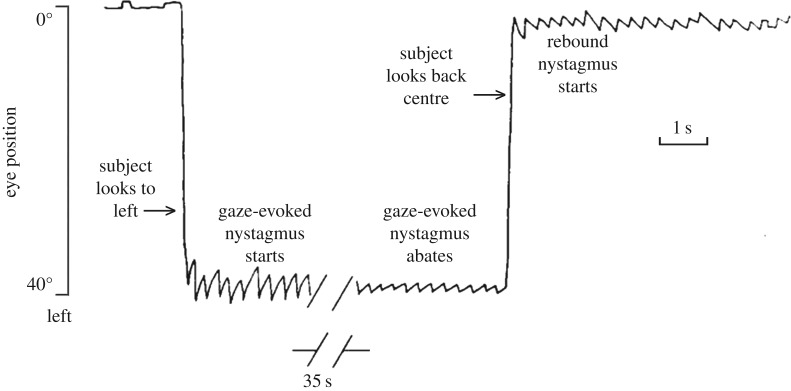Figure 1.
An example of the rebound phenomenon shown by an individual with spinocerebellar ataxia type 6. On looking towards a visual target located on the far left, gaze-evoked nystagmus begins, with inwardly directed, centripetal drifts of the eyes towards the central position and outwardly directed, centrifugal corrective quick phases. After 35 s of this sustained effort at maintaining eccentric gaze, the slow-phase drift velocity is reduced. When the eyes are returned to the central position, the nystagmus reverses direction (rebound nystagmus) and slowly dissipates reflecting the adaptation after-effect. Modified from [4].

